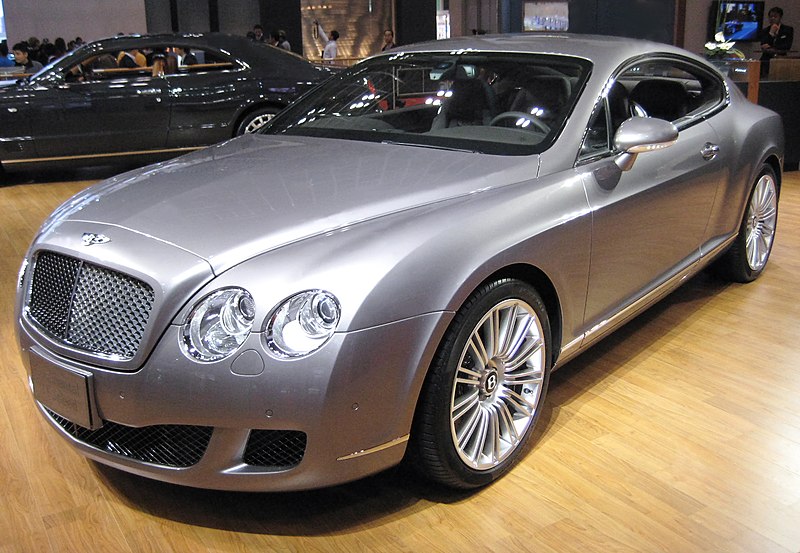The four-door Continental Flying Spur saloon was first displayed at the 2005 Geneva Motor Show. The Flying Spur utilizes most of the technical underpinnings of the Bentley Continental GT, and was introduced to European and North American markets in the summer of 2005. Together, the Bentley Continental GT and Flying Spur have boosted Bentley's annual production from around 1,000 units in 2003, to 9,200 units in 2006.[citation needed]
The Flying Spur has a 6-litre, 12-cylinder engine, configured in a W formation. Unlike a conventional 12-cylinder engine with two banks of 6 (V-12), the Continental’s 6-litre engine is configured in four banks of 3 cylinders each (W-12). This shortens the W-12 engine's length considerably, compared to a 2-bank configuration. The W-12 produces 552 bhp (412 kW; 560 PS), accelerates from 0-60 mph in 4.9 seconds, and propels the Flying Spur top speed of 194 mph (312 km/h).
One notable aspect of the Continental Flying Spur is its grille. Made to look like traditional chromed brass mesh, it is a metal-covered plastic-core. This was fitted as a safety feature; it is designed to break apart upon impact with a pedestrian.
The convertible version of the Continental GT, the Continental GTC,was first presented in September 2005, and was introduced to several world markets in the autumn of 2006. With the second generation Azure, it is the second Bentley convertible released in 2005. The roof is produced by Karmann in Osnabrück, Germany.
The GTC uses identical powertrain detail as the GT, and can accelerate from 0 to 100 kilometres per hour (0 to 62.1 mph) in 5.1 seconds.With the roof up, it will reach a top speed of 314 kilometres per hour (195.1 mph), and with the roof down 305 kilometres per hour (189.5 mph)


No comments:
Post a Comment